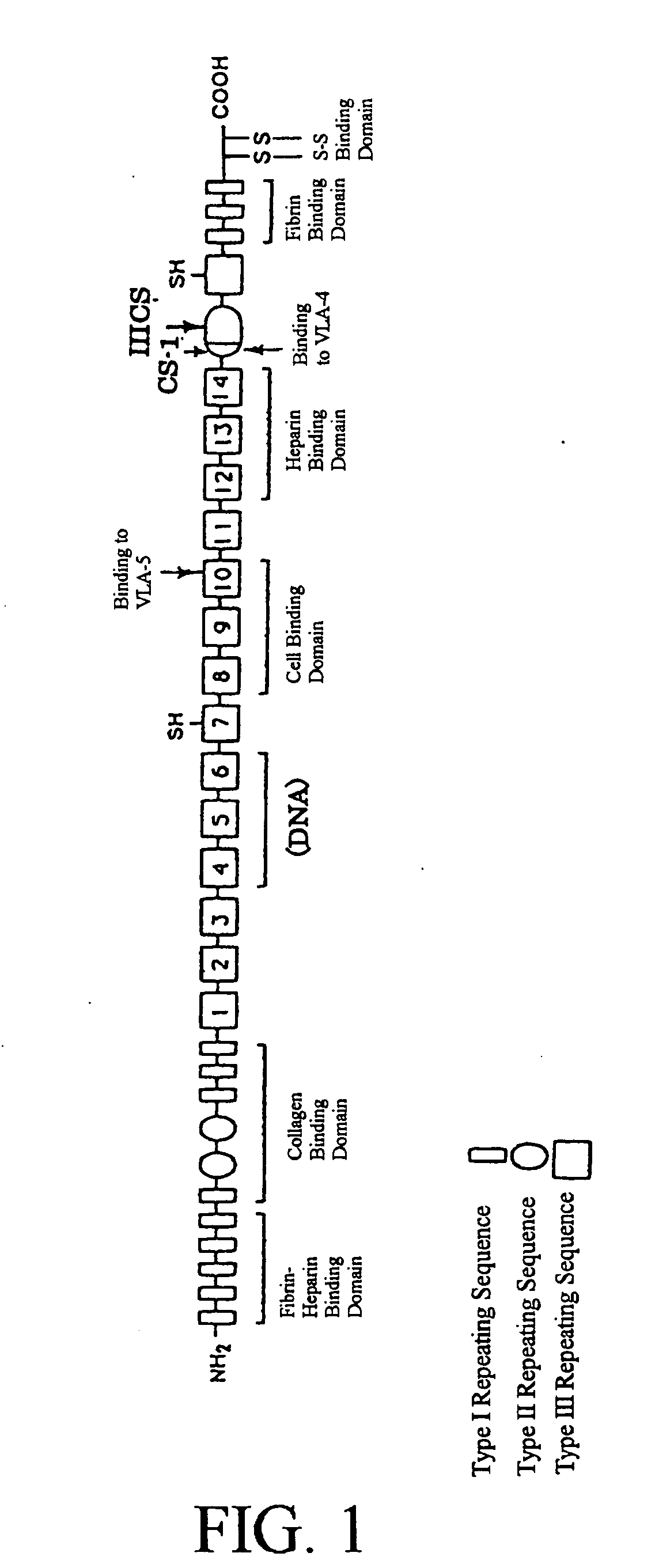Process for producing cytotoxic lymphocyte
a cytotoxic lymphocyte and process technology, applied in the field of preparing a cytotoxic lymphocyte, can solve the problems of reducing the number of cells in vitro, affecting the cytotoxic effect, and the ctl finally obtained may be reduced
- Summary
- Abstract
- Description
- Claims
- Application Information
AI Technical Summary
Benefits of technology
Problems solved by technology
Method used
Image
Examples
preparation example 1
Preparation of Fibronectin Fragment
(1) Preparation of Fibronectin Fragment
[0154] H-271, a fragment derived from human fibronectin, was prepared from Escherichia coli HB101 / pHD101 (FERM BP-2264) in accordance with the method described in U.S. Pat. No. 5,198,423.
[0155] In addition, H-296, CH-271 and CH-296, fragments derived from human fibronectin, were each prepared from a culture obtained by culturing Escherichia coli HB101 / pHD102 (FERM BP-7420), Escherichia coli HB101 / pCH101 (FERM BP-2799) or Escherichia coli HB101 / pCH102 (FERM BP-2800), in accordance with the method described in the above-mentioned gazette.
[0156] C-274, a fragment derived from human fibronectin, was prepared from a culture obtained by culturing Escherichia coli JM109 / pTF7221 (FERM BP-1915) in accordance with the method described in U.S. Pat. No. 5,102,988.
[0157] C-CS1, a fragment derived from human fibronectin, was prepared from a culture obtained by culturing Escherichia coli HB101 / pCS25 (FERM BP-5723) in a...
example 1
Ratio of CD8-Positive Cells in CTLs
(1) Isolation and Storage of PBMCs
[0167] Blood component was collected from a human normal individual donor having HLA-A2.1, obtained with informed consent. The collected blood component was diluted 2-folds with PBS(−), overlaid on Ficoll-paque (manufactured by Pharmacia), and centrifuged at 500×g for 20 minutes. The peripheral blood mononuclear cells (PBMCs) in the intermediate layer were collected with a pipette, and washed. The collected PBMCs were suspended in a storage solution of 90% FBS (manufactured by Bio Whittaker) / 10% DMSO (manufactured by SIGMA), and stored in liquid nitrogen. During CTL induction, these stored PBMCs were rapidly melted in water bath at 37° C., and washed with RPMI 1640 medium (manufactured by Bio Whittaker) containing 10 μg / ml Dnase (manufactured by Calbiochem). Thereafter, the number of living cells was calculated by trypan blue staining method, and the cells were subjected to each experiment.
(2) Induction of Ant...
example 2
Induction of Expression of Interleukin-2 Receptor
(1) Induction of Anti-Influenza Virus Memory CTLs
[0174] The induction of anti-influenza virus memory CTLs was carried out in the same manner as in item (2) of Example 1 using the PBMCs which were isolated and stored in the same manner as in item (1) of Example 1. The cytotoxic activity of CTLs on the fourteenth day after the initiation of induction was evaluated in the same manner as in item (3) of Example 1. As a result, there were hardly any differences in the cytotoxic activity by the presence or absence of the addition of FNfr during the induction.
(2) Determination of Ratio of Interleukin-2 Receptor Expression in CTLs
[0175] The ratio of interleukin-2 receptor (IL-2R) expression in the CTLs which were prepared in item (1) of Example 2 on the fourteenth day from the initiation of induction was determined according to the method described in item (4) of Example 1. Here, in this procedure, an FITC-labeled mouse anti-human CD8 an...
PUM
| Property | Measurement | Unit |
|---|---|---|
| concentration | aaaaa | aaaaa |
| pH | aaaaa | aaaaa |
| volume | aaaaa | aaaaa |
Abstract
Description
Claims
Application Information
 Login to View More
Login to View More - R&D
- Intellectual Property
- Life Sciences
- Materials
- Tech Scout
- Unparalleled Data Quality
- Higher Quality Content
- 60% Fewer Hallucinations
Browse by: Latest US Patents, China's latest patents, Technical Efficacy Thesaurus, Application Domain, Technology Topic, Popular Technical Reports.
© 2025 PatSnap. All rights reserved.Legal|Privacy policy|Modern Slavery Act Transparency Statement|Sitemap|About US| Contact US: help@patsnap.com

